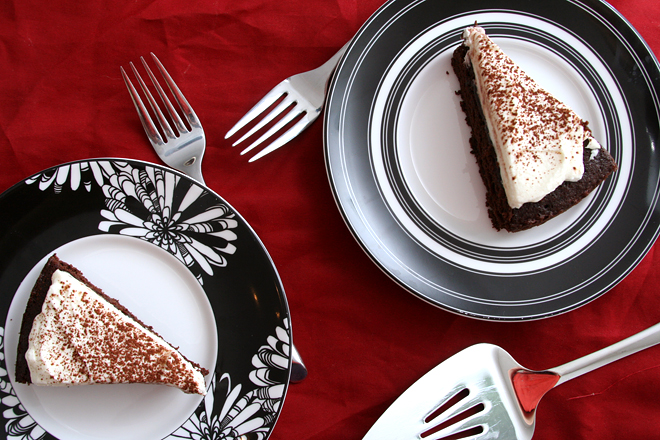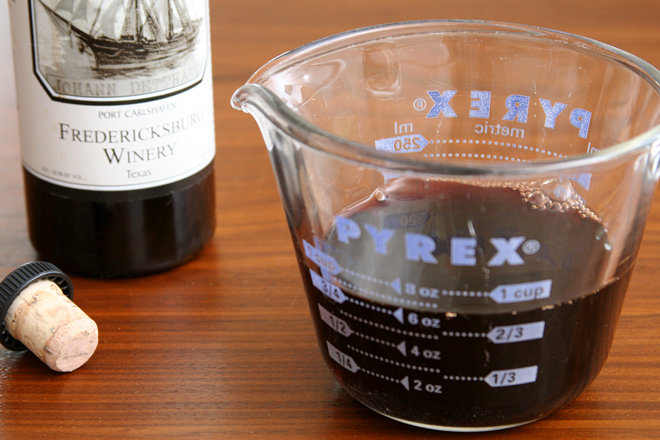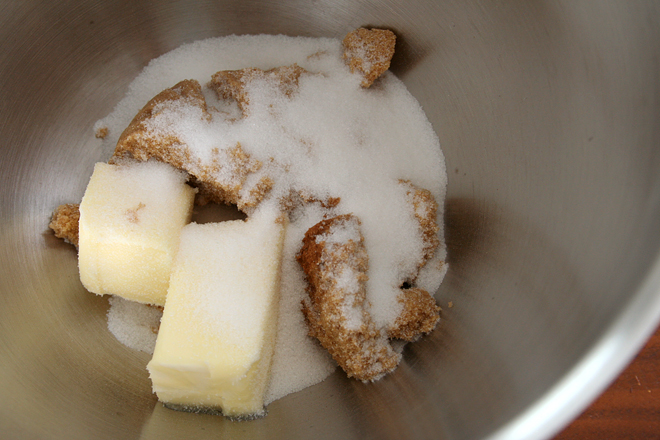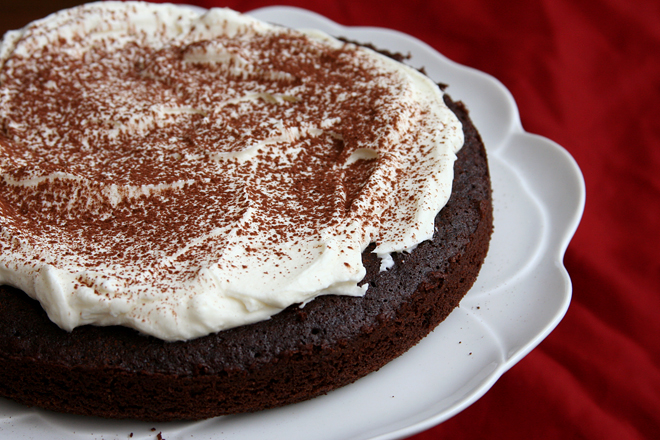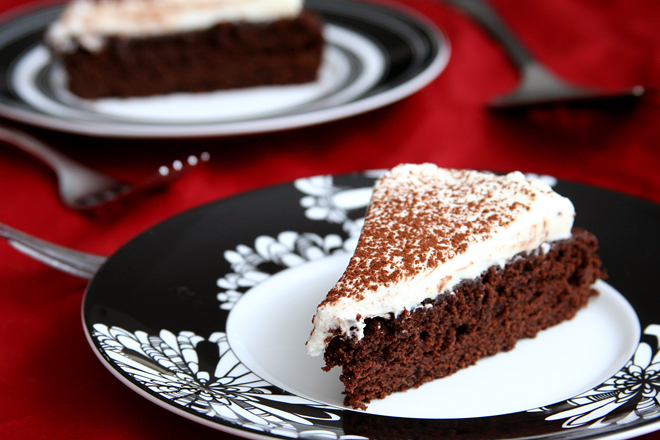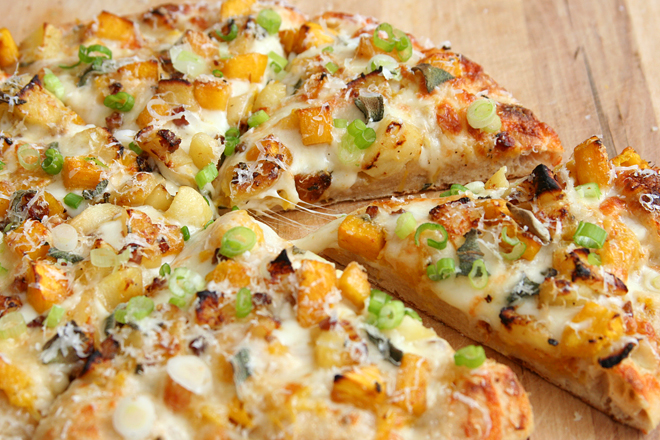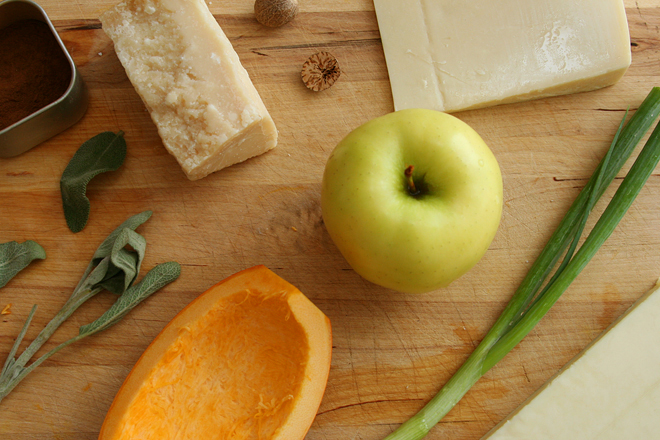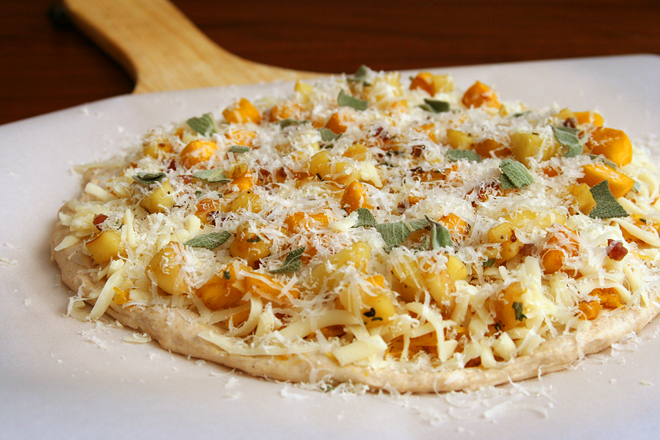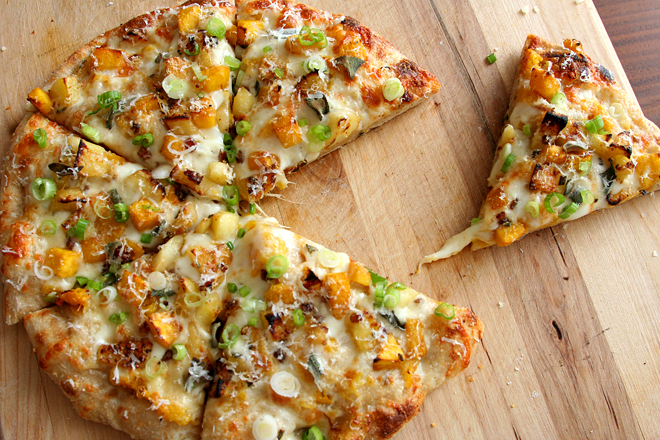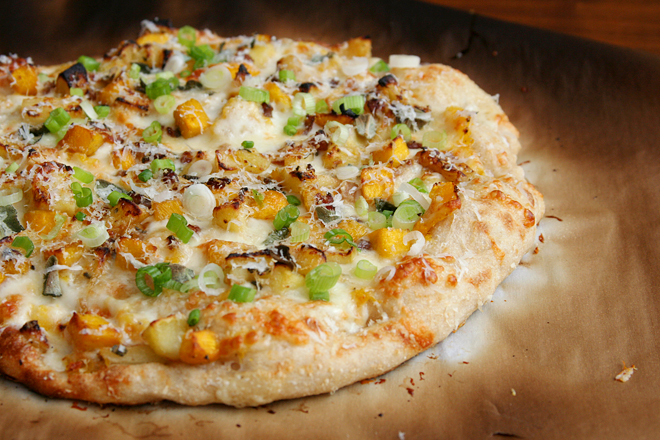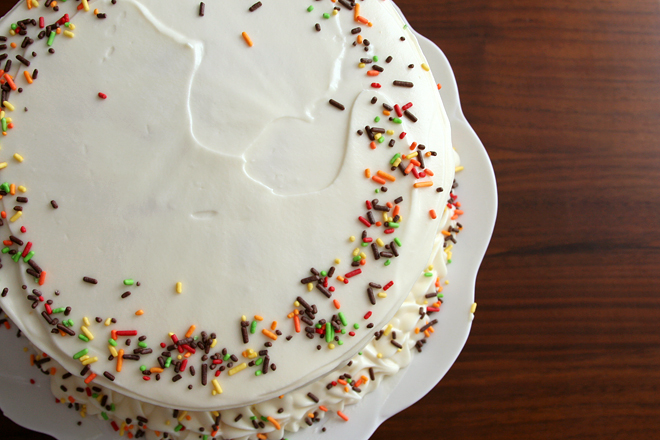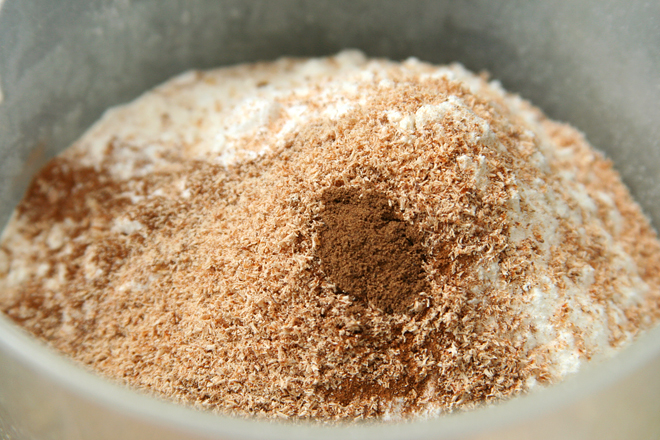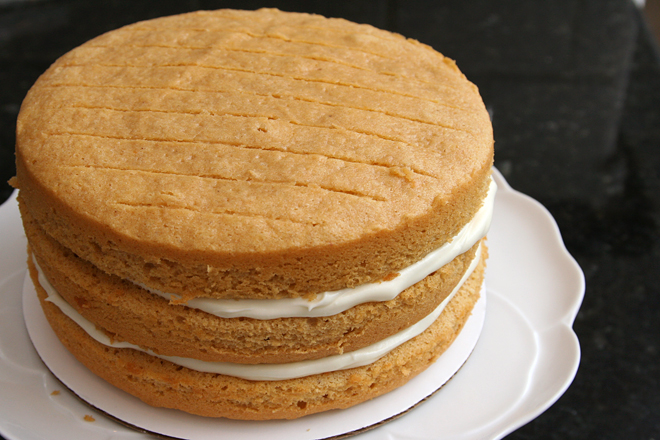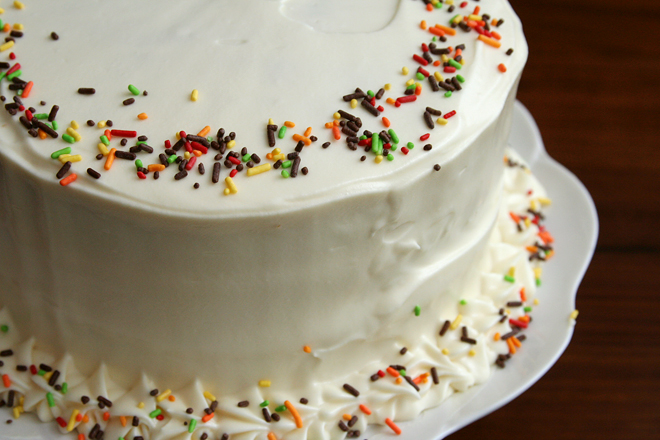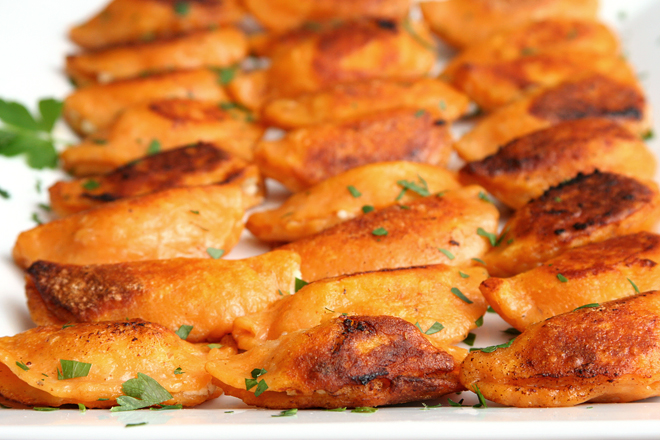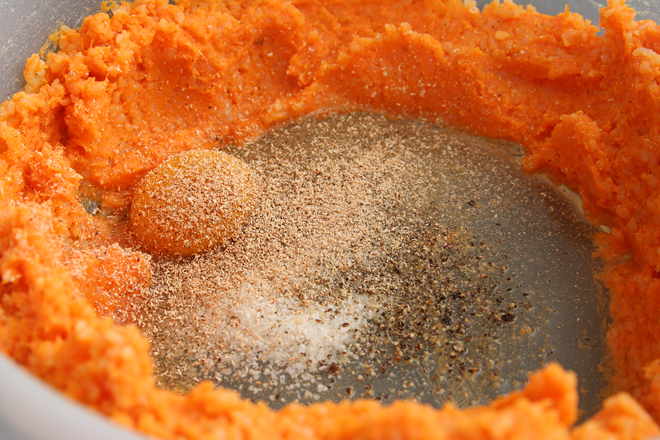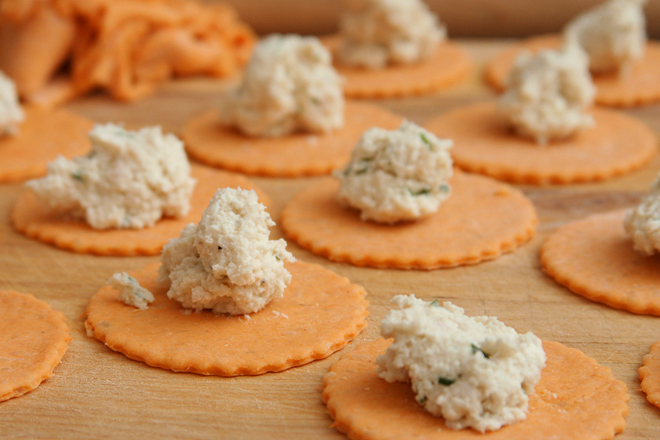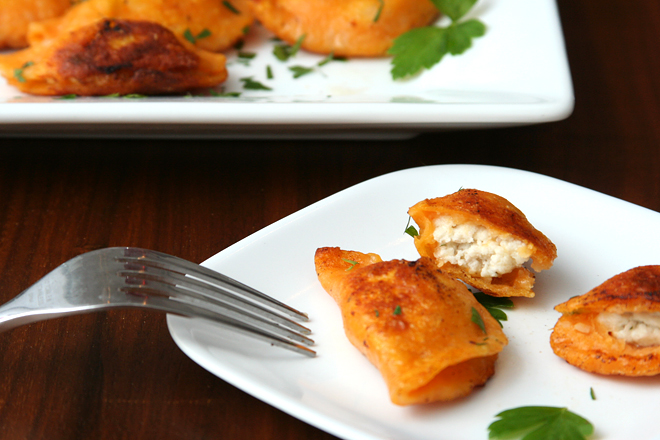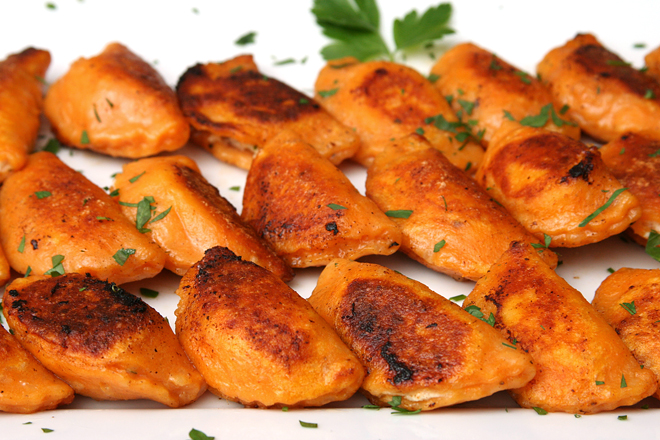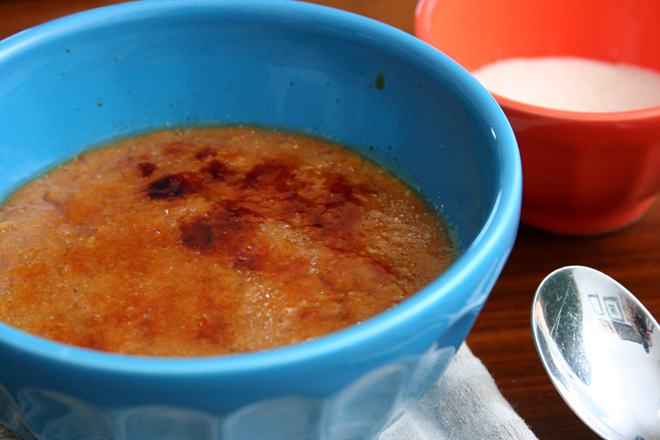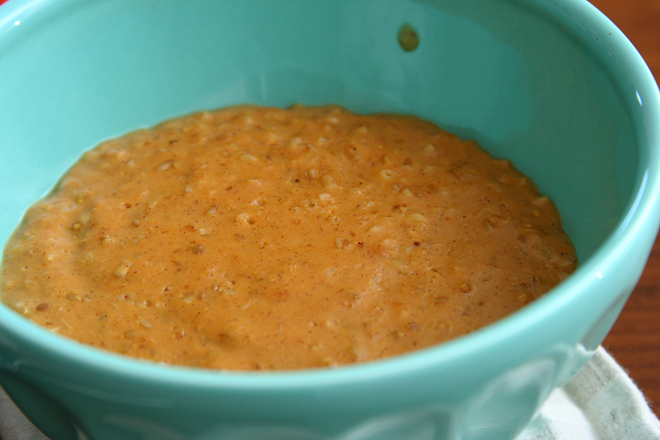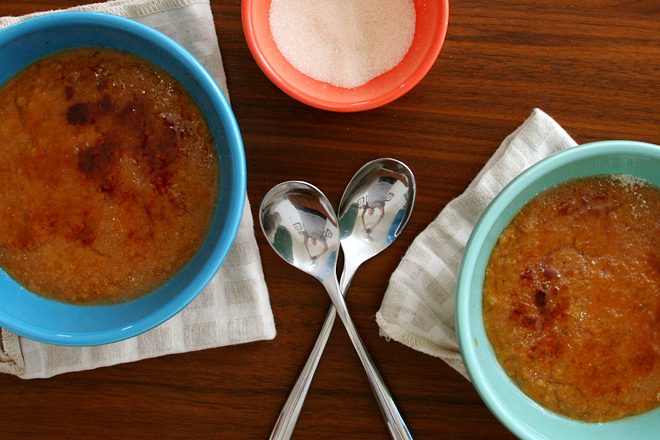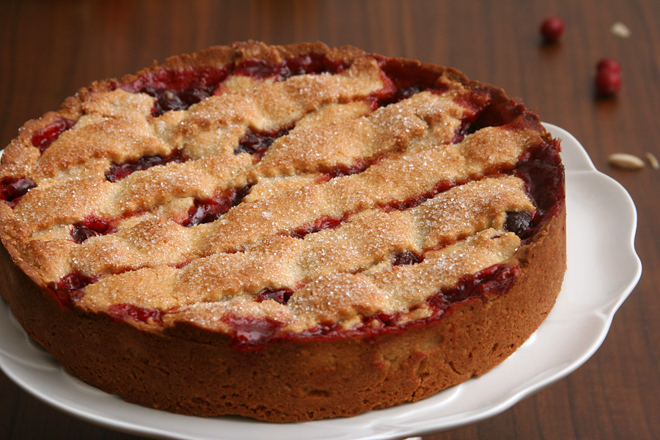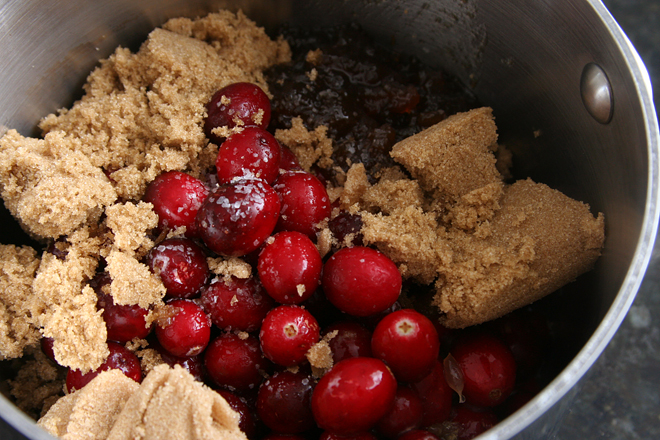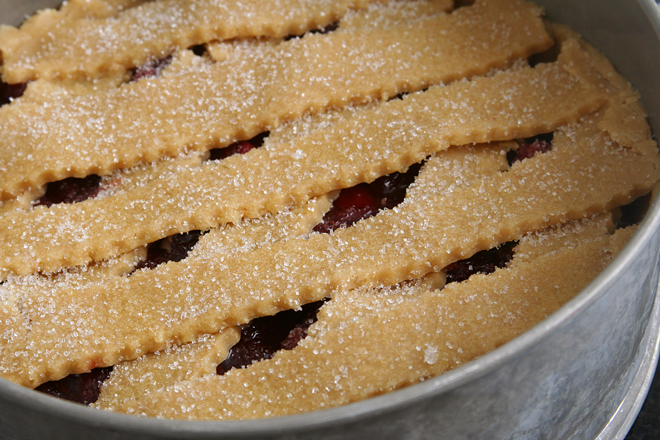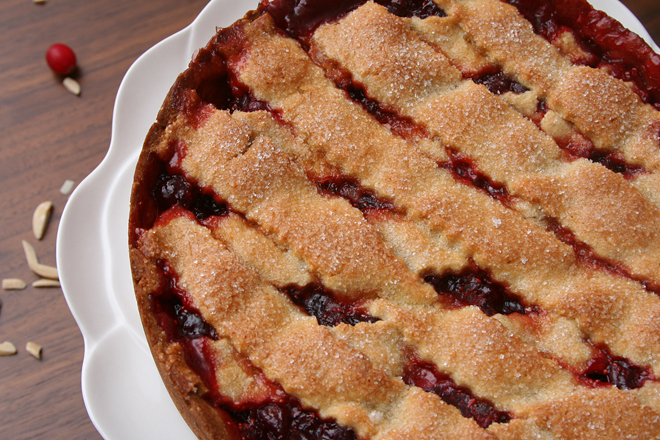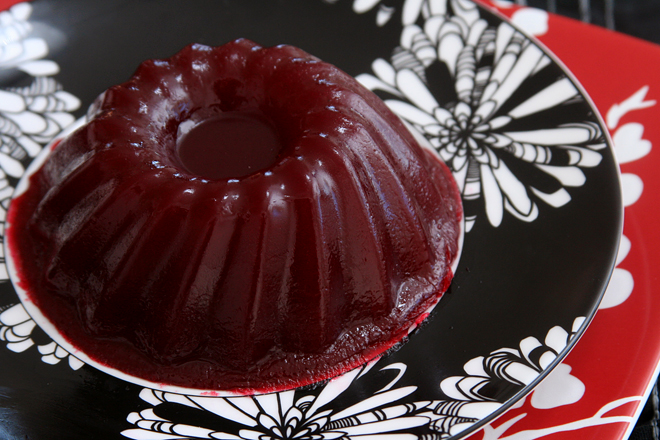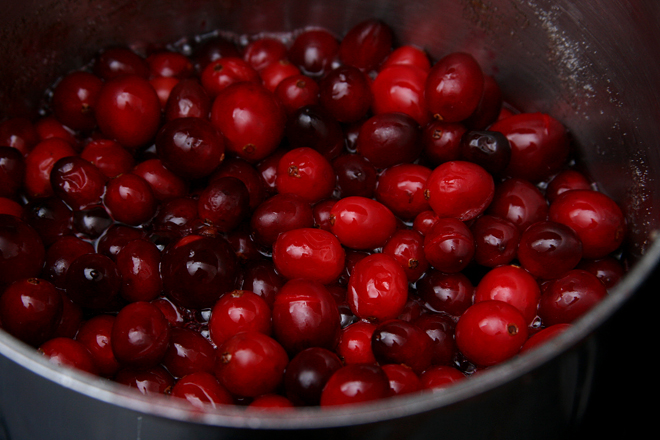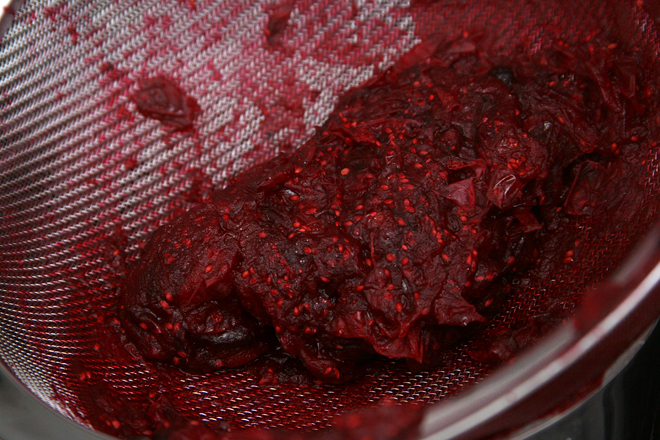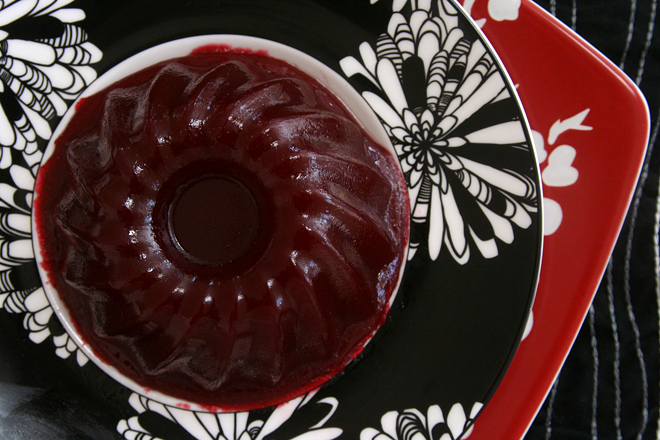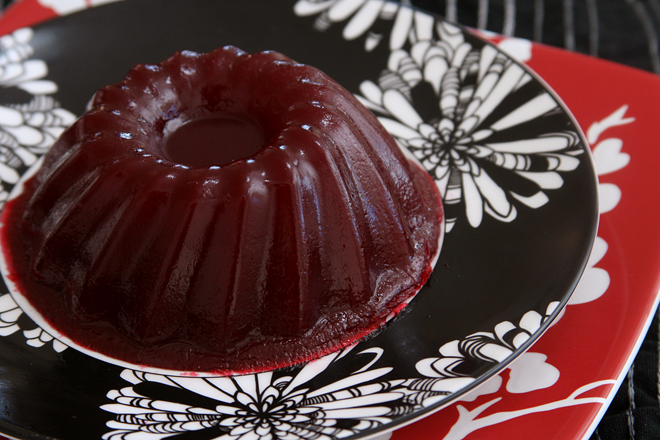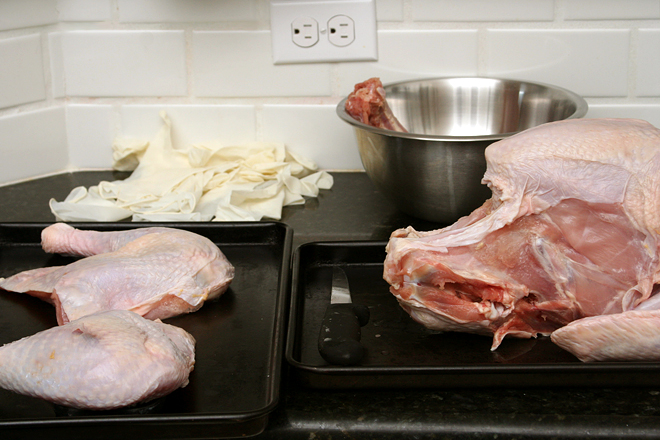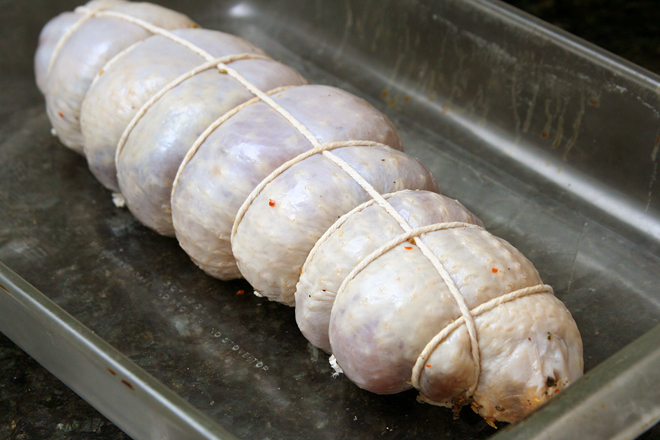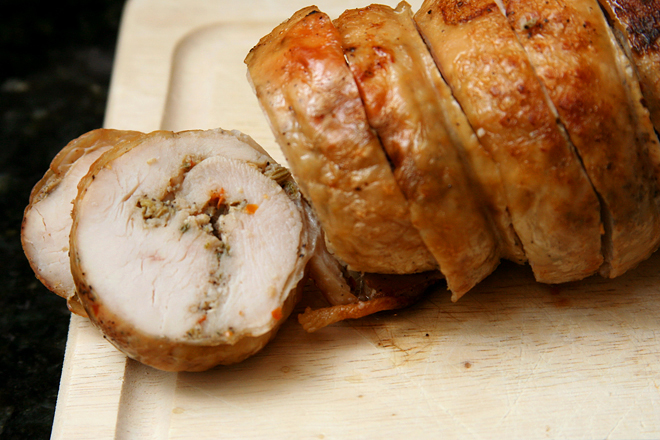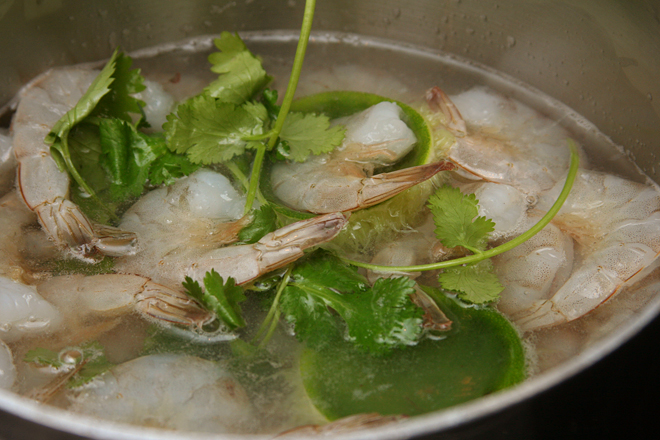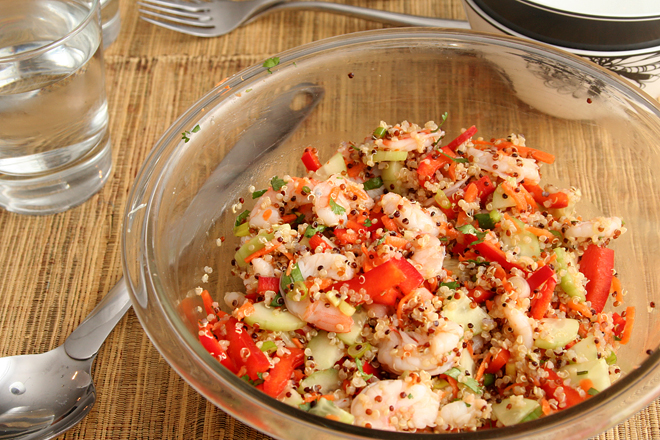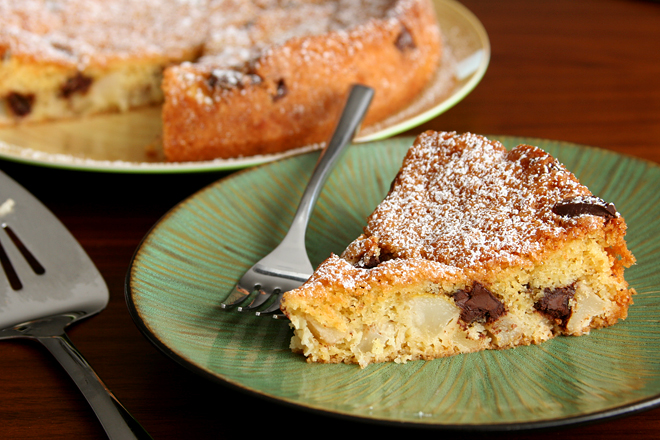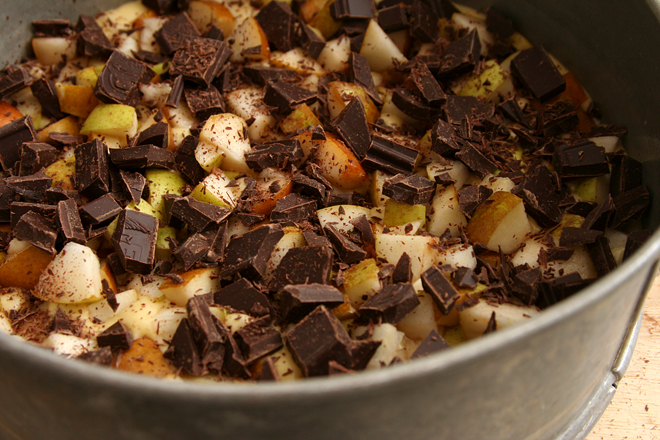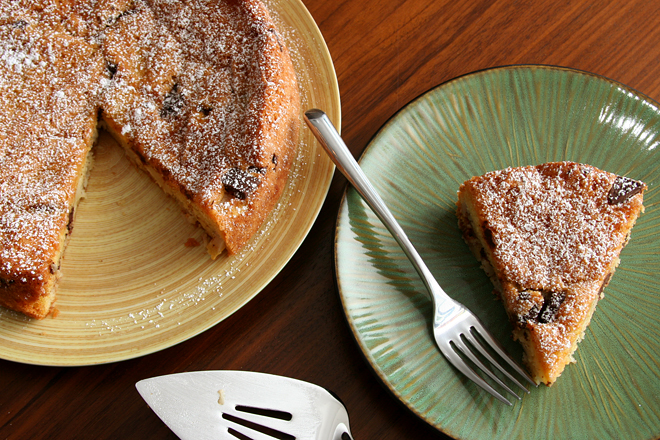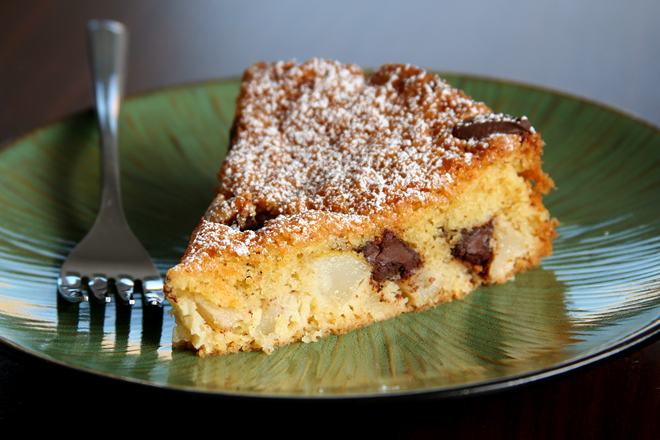I try not to be a hoarder. If I splurge on something, the last thing I want is for it to go to waste. That’s what almost happened with this bottle of port. We bought it last fall on a trip to Texas’s hill country, known for its wines. I have a friend who loves port, so we brought it over a few weeks later when we were invited to their house for dinner. And then, since port has a long shelf life, even after it’s opened, we put it back in the pantry.
And that’s where it stayed, for a year. I think the problem is that I always think of port as pairing nicely with desserts, particularly chocolate, but Dave and I rarely eat dessert at home. I couldn’t bear to pour it down the drain, so instead, I put it in cake.
Considering how good this cake was, the port can’t be said to have gone to waste. The port wasn’t an obvious flavor in the cake, but it must have contributed something to how rich and soft this cake was. Still, next time I buy an expensive bottle of wine, I’ll drink it with cake and save the cheap stuff for putting in the cake.
Printer Friendly Recipe
Port Wine Chocolate Cake (rewritten but barely adapted from Smitten Kitchen)
8-12 servings
Cake:
1 cup + 1 tablespoon (5.1 ounces) all-purpose flour
½ cup (1.5 ounces) Dutch cocoa powder
½ teaspoon baking powder
⅛ teaspoon baking soda
¼ teaspoon ground cinnamon
6 tablespoons unsalted butter, room temperature
¾ cup (5.25 ounces) firmly packed dark brown sugar
¼ cup (1.75 ounces) granulated sugar
¼ teaspoon table salt
1 large egg + 1 large egg yolk, room temperature
1 teaspoon vanilla extract
¾ cup port wine (tawny or ruby)
Topping:
½ cup mascarpone cheese
½ cup chilled heavy or whipping cream
2 tablespoons granulated sugar
¼ teaspoon vanilla extract
1. For the cake: Adjust a rack to the middle position and heat the oven to 325 degrees. Line the bottom of a 9-inch round cake pan with parchment paper; butter and flour the bottoms and sides of the lined pan, or spray with baking spray. In a small bowl, combine the flour, cocoa, baking powder, baking soda, and cinnamon.
2. In the bowl of electric mixer fitted with the paddle attachment, combine the butter, sugars, and salt; beat on medium speed until light and fluffy, 3-4 minutes. Add the egg yolk, beat until fully incorporated, then add the whole egg. Add the vanilla. Reduce the mixer speed to low and add one-third of the dry ingredients, followed by half the wine, another one-third of the dry ingredients, the remaining wine, and the remaining dry ingredients.
3. Transfer the batter to the prepared pan, smoothing the top. Bake until a toothpick inserted into the center of the cake comes out clean, 25 to 30 minutes. Let the cake cool in the pan for about 10 minutes, then turn it out onto a wire rack. Cool completely before topping, at least 1 hour. (The cake can be baked, cooled, tightly wrapped, and stored for at least one day before serving.)
4. For the topping: In the bowl of electric mixer fitted with the whisk attachment, beat the mascarpone, cream, sugar, and vanilla together until soft peaks form. Spread the topping over the cooled cake.
